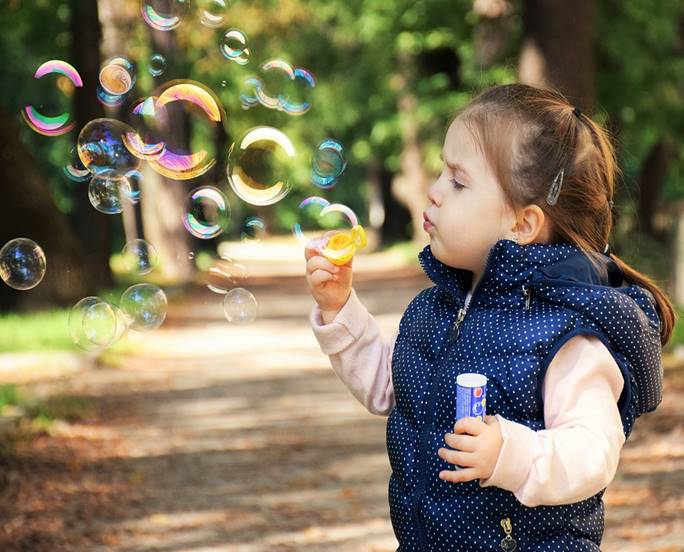
During the cold months, properly selected clothes for a child will allow him to feel comfortable at all times, will save him from the risk of hypothermia, which leads to a weakening of the immune system and as a result to frequent colds.
How to dress a child in winter: general rules
To begin with, it should be said that it is not the clothes themselves that warm us, but the air that is between the skin and the fabric of the garment. The materials that have excellent thermal protection are - wool, soft knitwear, fleece, synthetic winterizer, corduroy. These are fabrics that have a large number of small openings that allow air to circulate freely. Used for sewing winter pants, blouses, sweaters.
Other requirements for winter clothing:
Should not obstruct movement. Clothes should not be too tight, as this may interfere with the child's free breathing. Avoid tight cuffs, tight collars, too tight belts and rubber bands. The same applies to the scarf - it should not interfere with the child, to limit the ability to bend his head in different directions, to press the throat.
Outerwear for the cold season should not let cold air through the sleeves, fasteners, collar. So, it is better to take a jacket or down jacket with a windbreak. Also pay attention to the number of layers in the chosen jacket - there should be at least two of them, the upper one serves for protection from wind, and the inner layer does not allow heat loss.
When dressing your baby for a walk or kindergarten in the winter, consider not only the air temperature but also the wind speed: the higher the temperature, the colder the weather outside.
"thick jacket" doesn't always mean "warm jacket"?
Every parent's natural desire to "warm up" a child as much as possible before going out in the cold is completely understandable, but it can be a cruel joke. Focusing on our own feelings, we forget that children are much more active than adults, which means that it is harder for them to get cold.
Thick winter clothes make the child sweat actively while moving. Sweat is absorbed in underwear, then in a sweatshirt and then in the bottom layer of the jacket. As soon as the child stops moving, the moisture condensed in the tissue cools sharply, causing a lot of discomfort and leading to hypothermia of the body. The result is a cold, although the child is actually "well dressed".
Modern winter jackets are thin enough, but this should not confuse you: rely not on the thickness of the material, but on the temperature range specified by the manufacturer for which the item is intended. Well-known brands, whose products are presented in our catalog, conduct special tests and studies to help determine at what temperature the clothes remain comfortable and healthy.
What clothes to wear for your child if it's really cold outside?
If it's very cold outside, but you still have to leave your home, make sure your child wears three layers of clothing.
The bottom layer should be a thin and cotton T-shirt or thermal underwear. The main task of this layer is to absorb moisture, remove it from the body and dry quickly so that your child is comfortable and dry.
The second layer is a jumper for an active child or a sweater for a baby who spends a lot of time in the sleigh or in the arms of his parents. Choose things without metal zippers or buttons.
The top layer should be a down jacket or a jacket with lined polyester. Lightweight, with an "airbag" inside, it retains heat well. The upper part of the jacket must be made of waterproof material.

Other winter clothes for children.
Paying close attention to jackets, shoes, sweaters and pants in winter, many parents forget that it is just as important to carefully buy hats for children, because it is not just a modern wardrobe item that complements your chosen outfit , but also something on which children's health depends.
The preschooler's hat should be lined with a natural, thick enough fabric to absorb sweat and keep your child's hair and scalp dry. The hat is chosen according to the shape of the head, it should cover the back of the head, ears, forehead. It is better for children to take hats with ties so that during active games the neck or ears are not accidentally exposed to low outside temperatures.
As for gloves, it is better to abandon natural wool: it immediately gets wet from the snow or something and dries very slowly. The best option are two-layer thermal gloves with a waterproof upper layer.
How do you know if your child is hot or cold?
If the child is at an age when it is impossible to get an understandable answer from him to the question - "Son, are you cold?", then we check him for a number of signs:
You shouldn't have to worry if ...
1. The child feels comfortable and does not complain about anything.
2.His cheeks are pink.
3. The back, palms, buttocks and nose are cool (not cold!).
You should add clothes to your child's clothes if ...
1.The nose is red and the cheeks are pale.
2. Hands (over arm), bridge of nose, legs and neck are cold.
3. The child wants warmth and complains that he is cold.
The child is dressed too much if ...
1. Back and neck warm and sweaty.
2. The face is warm at temperatures below -8 degrees.
3. Hands and feet are warm and moist.
By following these simple rules, you can protect your child from hypothermia and make his outdoor games fun, comfortable and "safe". And walks in the winter frosty air will only be useful. Have fun!